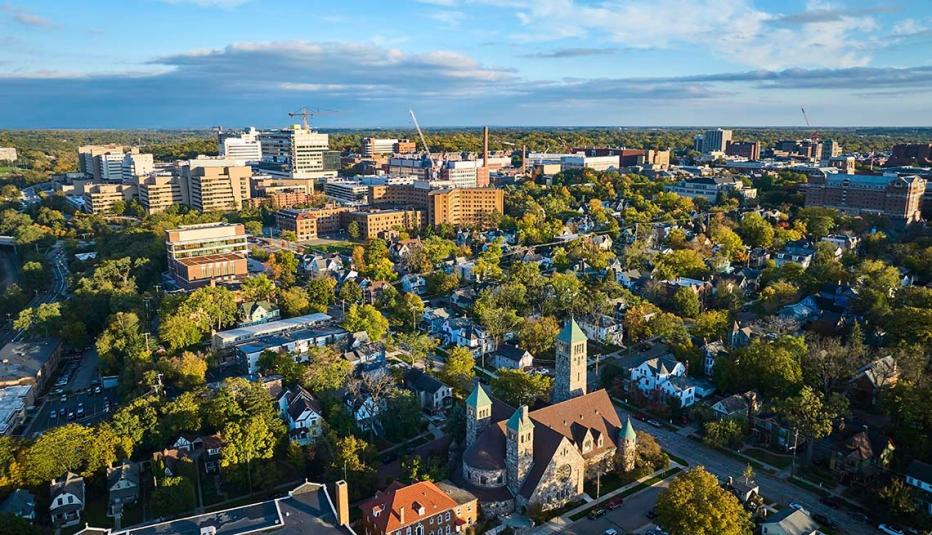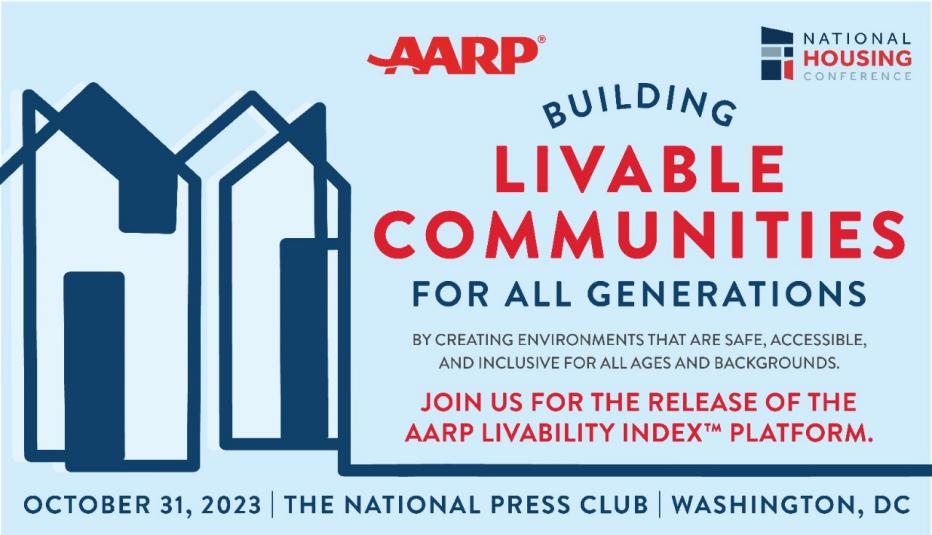AARP Hearing Center
Many older residents living in Ann Arbor, Michigan, express concerns over their housing, transportation alternatives to driving, caregiving support, and having a voice in their community, a new survey finds.


While Ann Arbor has generally created a welcoming environment, there remains room for improvement when it comes to both caring for and including older residents particularly at the civic level, according to a May 2025 survey of about 200 Ann Arbor residents 45 and older. While about 7 in 10 respondents say the design of their neighborhood makes it easy for them to socialize and feel connected to their community, about one-quarter say the city could do more to allow residents to have a voice in Ann Arbor’s decision-making and planning.
Housing and transportation
The survey highlighted areas where older residents would like to see more support, and the most pressing area is housing. More than 8 in 10 (82%) of those age 65-plus and 66% of those age 45–64 feel strongly about remaining in their home as they age. Yet it may not be easy to do so. About one-third of older residents are contemplating a move, in part because of finances. Many respondents say they may not have enough money to make needed modifications to their existing homes, keep up with property taxes, cover maintenance costs, or pay for rising utility bills.
Most older residents (70%) believe it’s important to have affordable housing, but 48% don’t feel there are good options in Ann Arbor currently. Availability is especially tight in the hub of activity near the city center, where just 26% of respondents find there are good options that are affordable and walkable.
In Ann Arbor, like many cities, the vast majority of residents (83%) rely on their own cars to get around, which many people recognize as a potential challenge as they age. Being able to get to the places they need to go is important for 87% of respondents. The ability to find transportation when they are no longer able to drive is worrying for 67% of respondents, and 40% acknowledge they expect it will be difficult to find an alternative to driving themselves.
Caregiving in Ann Arbor
The survey also explored issues related to caregiving. About one-quarter (23%) of residents age 45-plus are currently providing unpaid care to a family member or loved one, and 42% report doing so in the past. When asked about caregiving-related legislation, 87% favor reallocating long-term care funds to allow people to stay in their homes instead of nursing homes, 86% support a state income tax credit for family caregivers, and 84% would like more money for nursing home oversight services.
Methodology
The findings are based on a May 2025 survey of Michigan residents 45 and older. AARP worked with ANR Market Research Consultants to interview 207 respondents in Ann Arbor, primarily on their landline (101), but also cell phone (10), online (14) and text-to-web (82).
For more information, please contact Joanne Binette at jbinette@aarp.org. For media inquiries, contact External Relations at media@aarp.org.



































































